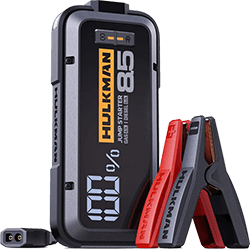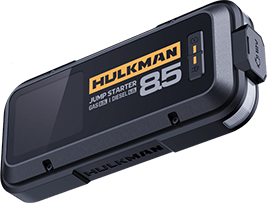Recent Articles
-
Mapping America’s Solar Landscape: Regional and Seasonal Variations November 11, 2025
-
Why Solva Solar Panels Stand Out: From Consumer’s Comment November 06, 2025
-
Unleashing Solar Power: Tips for Using and Maintaining Portable Solar Panels November 03, 2025
Featured Products
note
Chargers vs Inverters vs Transformers vs Converters: What’s the Real Difference?
In the U.S., the 120V/240V split-phase, 60Hz grid system has shaped how we use power conversion devices. Chargers, inverters, transformers, and converters may all look like simple “little boxes that change electricity,” but each one manages completely different energy behaviors. They don’t just tweak voltage — they switch energy types, waveforms, and directions. Understanding their differences is the key to protecting electronics, avoiding expensive damage, and choosing the right device for vehicles, home backup, or portable power stations.
In this article, we’ll cover:
- Core Function: How Each Device Actually Converts Power
- Real-World Use in the U.S. Grid
- Selection Strategy: How to Choose the Right Technology
- Looking Ahead: Smarter, Integrated Conversions
- Final Takeaway
Core Function: How Each Device Actually Converts Power
A transformer only changes AC voltage levels. It works on electromagnetic induction and always keeps the same frequency. With a 60Hz U.S. grid input, the output is still 60Hz. A common scenario is stepping 240V down to 120V for appliances or industrial tools. It doesn’t turn AC into DC or vice versa — it strictly converts AC-to-AC at the same frequency.
A charger (adapter/charger) converts AC into DC and often includes an internal transformer stage. It takes 120V or 240V AC, steps it down, and rectifies it into stable DC. Phone chargers, laptop adapters, and small household electronics rely on this. Two mainstream types exist: linear power supplies, which are low-noise but less efficient, and switching power supplies, which are compact and typically between 75% and 95% efficient. The latter dominates consumer devices today.
An inverter does the opposite of a charger — it converts DC (e.g., from batteries or solar) into AC at household voltage levels, such as 120V or 240V at 60Hz. Waveforms vary: pure sine wave (best for precision gear), modified sine wave for general appliances, and square wave for simple tools.
A converter is more versatile and can perform DC-to-DC or AC-to-AC transitions. For example, it may take 120V AC and output 24V DC for vehicle equipment, or adjust AC frequency.
Real-World Use in the U.S. Grid
In American homes, chargers and transformers are the fundamentals. Wall outlets deliver 120V or 240V, and chargers handle the drop to low-voltage DC for phones, tablets, cameras, or laptops. Many consumer chargers are rated 100–240V, meaning they are travel-friendly but may need a plug adapter. Transformers play a quieter role inside many large appliances, like ovens that require 240V but still need 12V circuits for controls.
In industrial facilities and off-grid environments, inverters and converters are essential. Inverters convert battery or solar power to AC for machines, monitoring systems, or mobile offices. Converters may stabilize voltage for heavy equipment or motors.
Portable power stations blend inverter technology with battery management. The Hulkman Mega stands out here because it delivers pure sine wave AC output and can switch over to UPS (uninterruptible power supply) mode in as little as 15 milliseconds. That makes it one of the few portable stations suited to cameras, drones, NAS devices, or other electronics where heat buildup and data stability matter. Unlike basic power stations that rely on modified sine wave output, the Hulkman Mega can safely drive inductive loads like coffee makers and drills without stalling motors or causing irregular heating.
A Reddit thread on r/solarpanels noted that pure sine wave inverters significantly reduce fan noise, jitter, and thermal stress on electronics — especially during charging cycles (Reddit). That aligns with field tests where modified or square wave systems caused measurable overheating under identical loads.
Specialized settings often combine devices. For instance, a data center in Texas may use transformers to stabilize incoming voltage, converters to distribute correct levels to servers, and inverters for emergency DC-to-AC backup when outages hit. This layered strategy works smoothly with split-phase wiring and provides continuity for sensitive systems.
Selection Strategy: How to Choose the Right Technology
While these devices overlap in appearance, the right selection comes down to a few practical filters:
1. Do you need AC or DC output?
• AC-to-DC: choose a charger or DC converter.
• DC-to-AC: choose an inverter.
• AC-to-AC: choose a transformer or AC converter.
• DC-to-DC: choose a converter.
2. Check required voltage and frequency.
If only the voltage changes but the current remains AC, a transformer usually does the job. If the energy type switches or the frequency must be modified, a converter or inverter is necessary.
3. Match the device to the environment.
Precision electronics need pure sine waves or low-noise linear power supplies. Portable or mobile gear often relies on switching chargers or compact DC converters.
4. Look beyond wattage.
Efficiency above 90% is acceptable, and over 94% is excellent. But you also need to consider total harmonic distortion (THD) and switching latency. A THD below 3% is considered safe for audio systems, motors, and mission-critical electronics. UPS or failover time is especially important; systems that respond in under 20 ms can prevent crashes, glitches, or data corruption.
This is exactly where the Hulkman Mega has an edge. It combines pure sine wave output with sub-20 ms UPS switching and supports sensitive DC recharging for devices that throttle or overheat when receiving unclean sine waves. Unlike basic inverters, it is engineered to deliver stable AC under variable loads without risking waveform distortion.
An academic paper from the Journal of Power Electronics pointed out that higher THD in modified sine wave inverters accelerates thermal aging in capacitors and semiconductors in household electronics (Journal of Power Electronics). This highlights why choosing the correct inverter type — or a portable power station that uses one — is crucial for safety and durability.
Looking Ahead: Smarter, Integrated Conversions
As the U.S. grid shifts toward smart monitoring and distributed power, these four device categories are blending. Some chargers now embed mini inverters to provide emergency AC, while advanced transformers incorporate voltage regulation to smooth out fluctuations. The industry is moving toward compact, multifunctional hardware that can sense incoming voltage, balance loads, and switch between AC and DC as needed.
The next generation of gear is likely to include internet-connected modules that adapt in real time. Portable power stations are already at the forefront of this change. The Hulkman Mega, for instance, integrates battery management, pure sine wave inversion, UPS capability, and fast recharging into a single platform. With energy demands expanding — from home offices to solar setups and RV travel — one device that safely handles both precision electronics and motorized appliances becomes a real advantage.
Final Takeaway
Chargers, inverters, transformers, and converters are not interchangeable — each manages a different type of energy flow. Whether you’re powering a laptop, running tools off-grid, or backing up a server, matching the right function to the right scenario prevents equipment damage and ensures efficiency. With the U.S. 120V/240V split-phase system and growing interest in portable energy storage, understanding these distinctions is increasingly essential.
Portable power stations now blur old boundaries, but performance still hinges on waveform quality and circuit design. Devices like the Hulkman Mega prove that pure sine wave output, rapid UPS switching, and stable DC management can protect sensitive electronics while driving high-demand appliances. As the grid modernizes, high-efficiency conversion and integrated design will separate future-ready systems from outdated hardware — and knowing these fundamentals is where good decisions start.






















